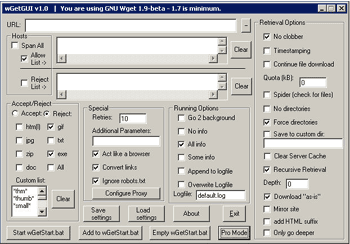It has been a while since I went through the course, and I wanted to report back on how it went. Some things went well, some no so well…
The good:
- The course is a great introduction to design.
- I learned a lot of design jargon (for example: visual hierarchy).
- I gained a solid understanding of what it takes to do design.
- I now know what makes good design and what makes bad design.
- I learned about some of the existing design tools and utilities out there (color scheme selection helpers, style tiles).
- Having a mentor and getting feedback both on the site and via video (Skype in this case) was incredibly useful and pushed my learning much faster.
The not-so-good:
- Though advertised as only requiring 10 hours a week, it took significantly longer than that:
- Large amounts of reading (at least 10 hours worth per week).
- Being unfamiliar with design tools meant I had to learn and experiment with them as well (GIMP, Inkscape and Balsamiq Mockups to name a few).
- My mentor disappeared on me during the last week of the course (he had a product launch).
- I did not realize that iteration were expected from the get go – the interface wasn’t clear about this (there were a few hints, but not enough for me), not did my mentor explicitly mention it.
- Some of the downloaded resources require Photoshop and other commercial tools, where a developer or someone learning about design wouldn’t necessarily have them (or want to purchase them just for the course).
In general, the course was great, though I didn’t get as much from it as I probably could have.
Coming into it, I didn’t have a specific project that I wanted to apply my learning to. Had I had one, I would have had more motivation and some end goal to work towards during the course (the course did seem geared towards the notion of working on an existing project, in particular the last two weeks of it).
I struggled with the actual time requirements, partially due to the need to learn new tools and partially due to the large amount of required reading.
I was able to gain an understanding of the design workflow, language and tooling. Not enough to become a designer myself, by enough to converse and understand design jargon, and possibly come up with a decent enough design myself.
I had a feedback session with one of the founders – he was very receptive to everything I had to say, the good and the bad, and I have seen that since, they have made some changes. To be fair to them, the course was still very new (I was in the second “class” – only the second time they have run through it) – they have now had plenty of time to refine things.
The course has been renamed from “Design for Developers” to “Design 101“, which I think is a much better name. The reading requirements have been adjusted and there have been many changes to the UI to address some of the issues I’ve raised. I’ve been told that introductions to the different tools and downloadable resources have been added to the site.
Design Labs are also offering a – UX Research & Strategy course these days.
If you are thinking of taking this course I can make a few recommendations:
- Have a project that needs some design work. This can be something you work towards polishing throughout the course.
- Expect to spend a good amount of time learning the tools.
- Make sure you iterate from day one – this is where the value is. Given feedback from your mentor – follow up on it, make changes and iterate.
- Enjoy!
